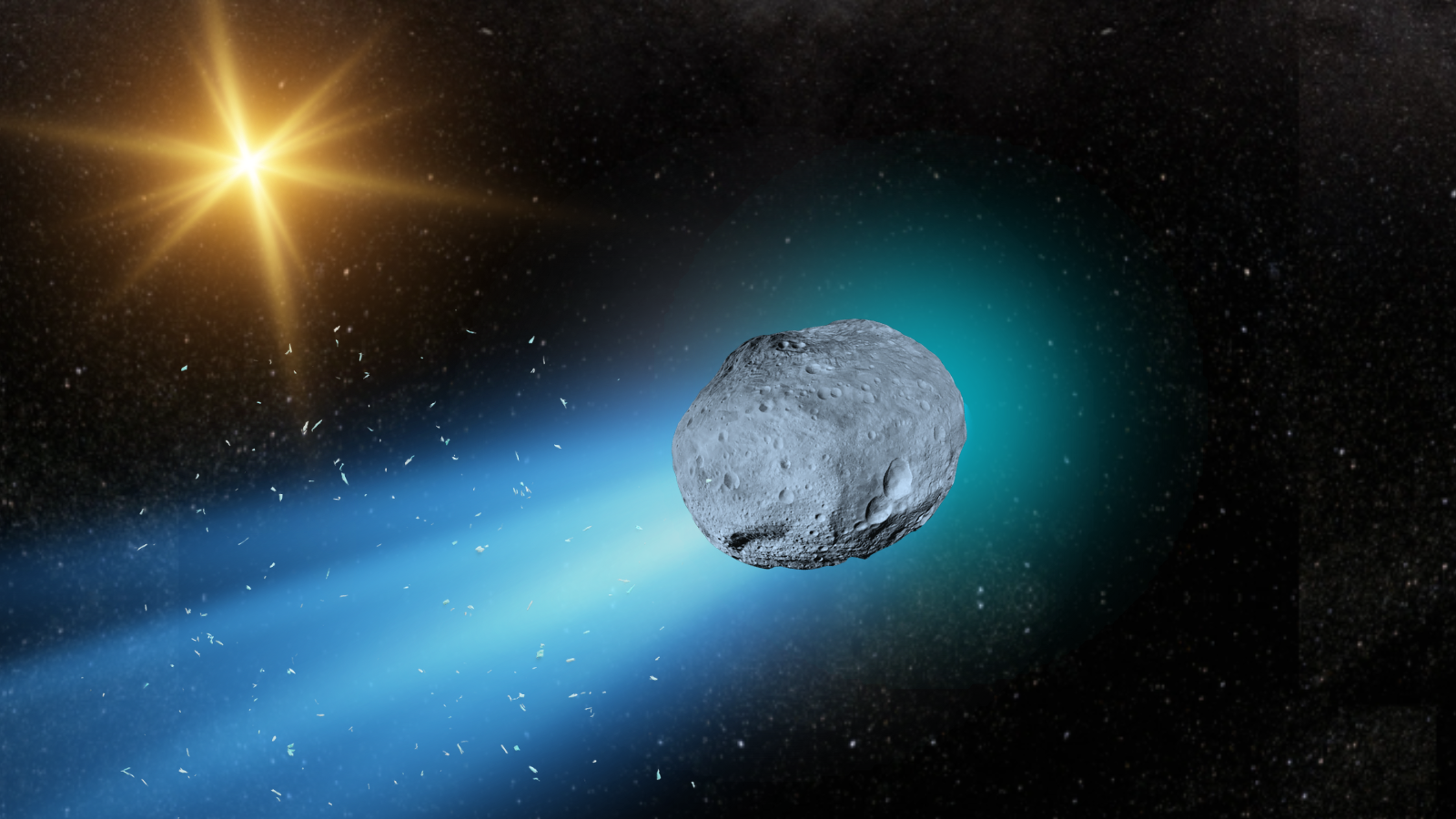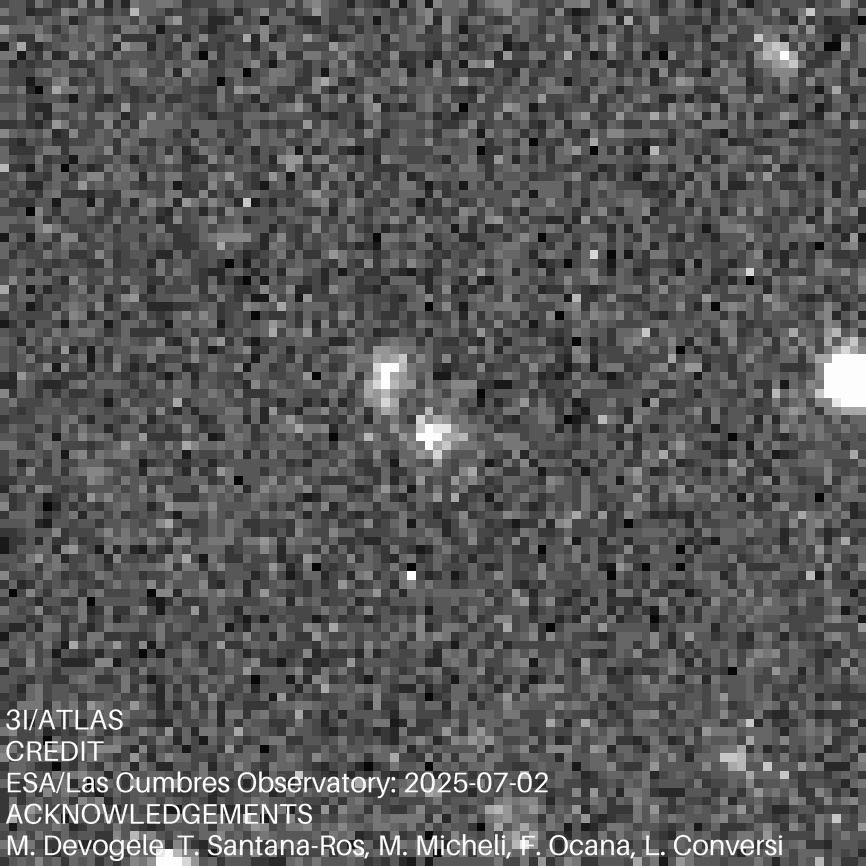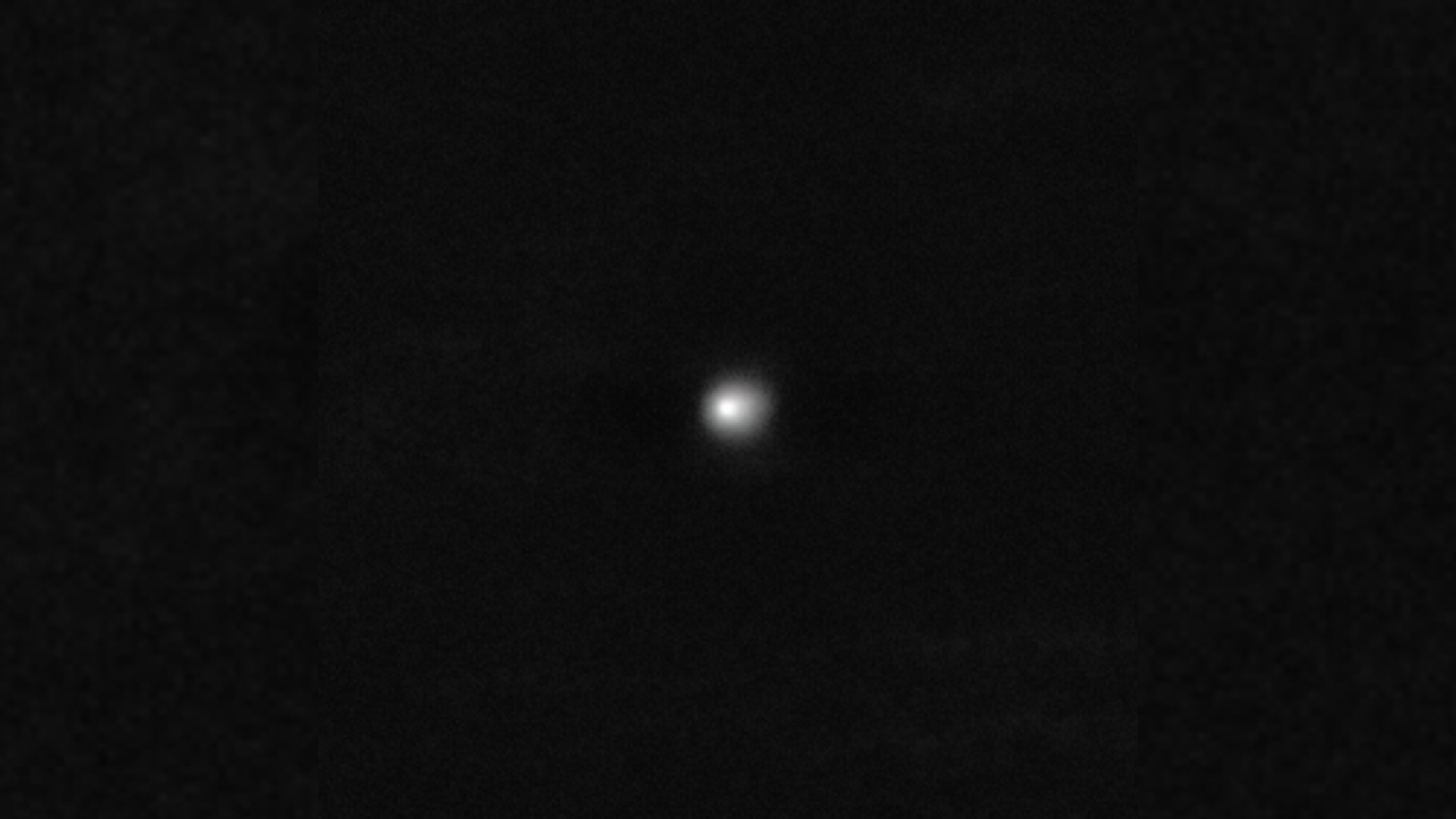
The recently discovered interstellar visitor 3I/ATLAS may be one of the oldest comets ever seen by humanity.
The object was already exciting to astronomers as only the third space object seen entering the solar system from beyond its limits, the other two being 1I/'Oumuamua seen in 2017 and 2I/Borisov detected in 2019.
However, new research has shown this potentially "water ice-rich" visitor could be even more extraordinary than initially believed. 3I/ATLAS could be around 3 billion years older than our 4.5 billion-year-old solar system and thus any comet ever before observed.
University of Oxford astronomer Matthew Hopkins is part of a team of scientists that think 3I/ATLAS, discovered on July 1, 2025 by the ATLAS survey telescope, is around 7 billion years old.
"All non-interstellar comets, such as Halley's comet, formed at the same time as our solar system, so they are up to 4.5 billion years old," Hopkins said in a statement. "But interstellar visitors have the potential to be far older, and of those known about so far, our statistical method suggests that 3I/ATLAS is very likely to be the oldest comet we have ever seen."
The secret to 3I/ATLAS' old age
The key to the advanced age of 3I/ATLAS is the fact that it comes from a completely different region of the Milky Way than previous interstellar visitors.
Based upon the steep trajectory that 3I/ATLAS appears to be taking through our galaxy, Hopkins and colleagues theorize that it originated in the Milky Way's "thick disk" of stars.
The thick disk is a band of our galaxy's most ancient stars that sandwiches the thin disk, which formed more recently and contains our relatively young star, the sun, and the solar system.
"This is an object from a part of the galaxy we've never seen up close before," University of Oxford astrophysicist Chris Lintott said. "We think there's a two-thirds chance this comet is older than the solar system, and that it's been drifting through interstellar space ever since."

If 3I/ATLAS originates from the Milky Way's thick stellar disk, and thus formed around an ancient star, this also has implications for its chemical composition. Hopkins and crew suggest the interstellar interloper may be rich in water ice.
As 3I/ATLAS gets closer to the sun, it will get warmer. Frozen ices will turn to gas, a process called sublimation, and erupt from the surface of the comet.
This outgassing will give 3I/ATLAS a cometary aura, or "coma," and a bright tail, the familiar and distinctive characteristics of comets.
Observations have already indicated that 3I/ATLAS is bursting to life with cometary activity. These observations also seem to indicate that 3I/ATLAS is bigger than previous interstellar invaders 1I/'Oumuamua and 2I/Borisov.
"We're in an exciting time, 3I/ATLAS is already showing signs of activity. The gases that may be seen in the future as 3I/ATLAS is heated by the sun will test our model," team member Michele Bannister, of the University of Canterbury in New Zealand, said. "Some of the biggest telescopes in the world are already observing this new interstellar object – one of them may be able to find out!"

One of the telescopes that will be trying to get a look at 3I/ATLAS will be the Vera C. Rubin Observatory.
In fact, this interstellar visitor was first spotted as scientists were preparing to make observations with Rubin, which they predict will uncover between 5 and 50 interstellar objects passing through the solar system as it conducts the 10-year-long Legacy Survey of Space and Time (LSST).
"The discovery of 3I/ATLAS suggests that prospects for Rubin may now be more optimistic; we may find about 50 objects, of which some would be similar in size to 3I/ATLAS.
"This week's news, especially just after the Rubin First Look images, makes the upcoming start of observations all the more exciting."
The model the team used to investigate the origins of 3I/ATLAS was developed by Hopkins as part of his doctoral thesis, one he defended just one week before the interstellar object was discovered.
Rather than heading on vacation, Hopkins found himself applying the model, dubbed the Ōtautahi–Oxford Model, in real-time for the first time. The test subject: 3I/ATLAS.
"Rather than the quiet Wednesday I had planned, I woke up to messages like '3I!' It's a fantastic opportunity to test our model on something brand new and possibly ancient," Hopkins concluded.
Hopkins discussed the 3I/ATLAS findings on Friday (June 11) at the Royal Astronomical Society National Astronomy Meeting (NAM) 2025 at Durham University in the UK.







